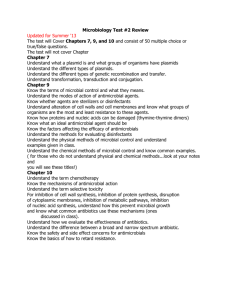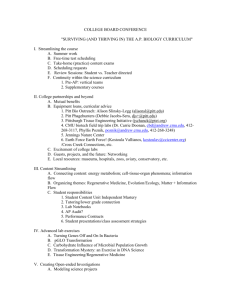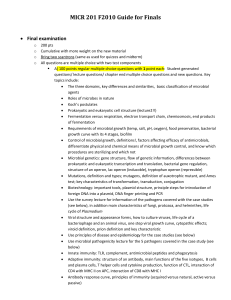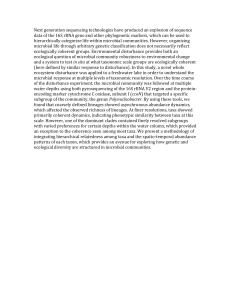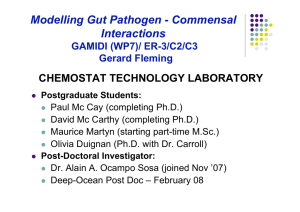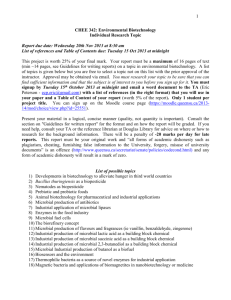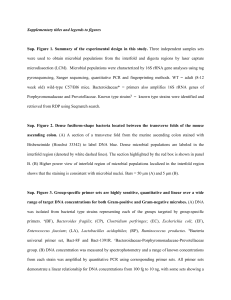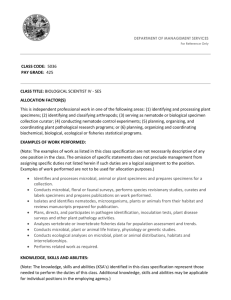Chapter 8: Microbial Genetics
advertisement
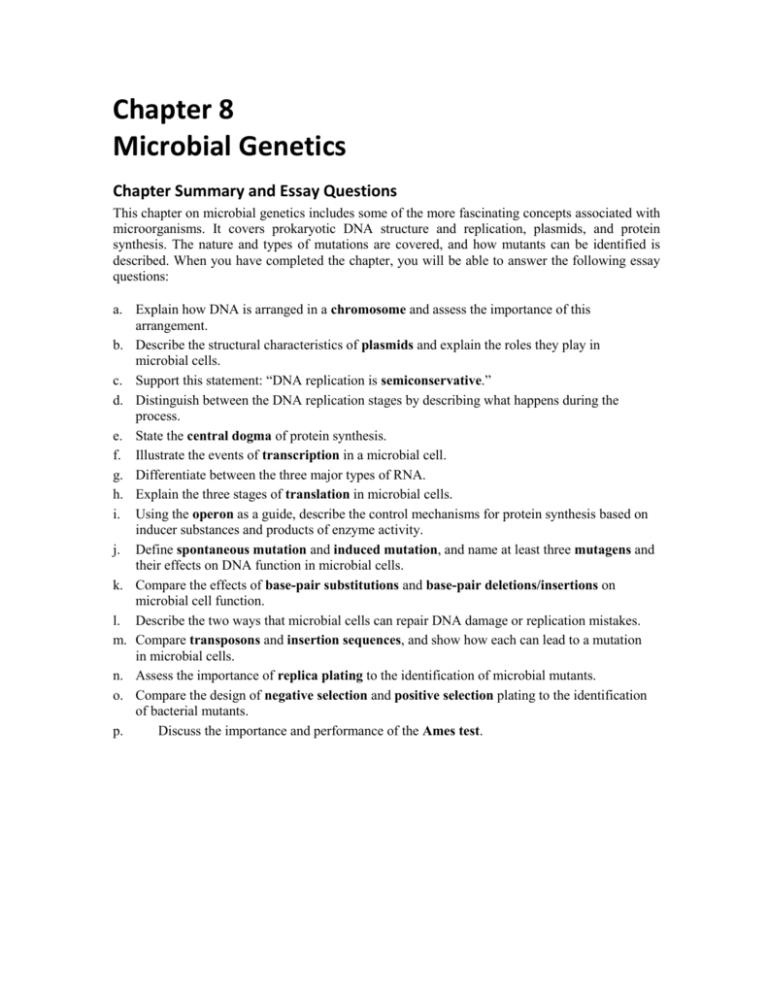
Chapter 8 Microbial Genetics Chapter Summary and Essay Questions This chapter on microbial genetics includes some of the more fascinating concepts associated with microorganisms. It covers prokaryotic DNA structure and replication, plasmids, and protein synthesis. The nature and types of mutations are covered, and how mutants can be identified is described. When you have completed the chapter, you will be able to answer the following essay questions: a. Explain how DNA is arranged in a chromosome and assess the importance of this arrangement. b. Describe the structural characteristics of plasmids and explain the roles they play in microbial cells. c. Support this statement: “DNA replication is semiconservative.” d. Distinguish between the DNA replication stages by describing what happens during the process. e. State the central dogma of protein synthesis. f. Illustrate the events of transcription in a microbial cell. g. Differentiate between the three major types of RNA. h. Explain the three stages of translation in microbial cells. i. Using the operon as a guide, describe the control mechanisms for protein synthesis based on inducer substances and products of enzyme activity. j. Define spontaneous mutation and induced mutation, and name at least three mutagens and their effects on DNA function in microbial cells. k. Compare the effects of base-pair substitutions and base-pair deletions/insertions on microbial cell function. l. Describe the two ways that microbial cells can repair DNA damage or replication mistakes. m. Compare transposons and insertion sequences, and show how each can lead to a mutation in microbial cells. n. Assess the importance of replica plating to the identification of microbial mutants. o. Compare the design of negative selection and positive selection plating to the identification of bacterial mutants. p. Discuss the importance and performance of the Ames test.


